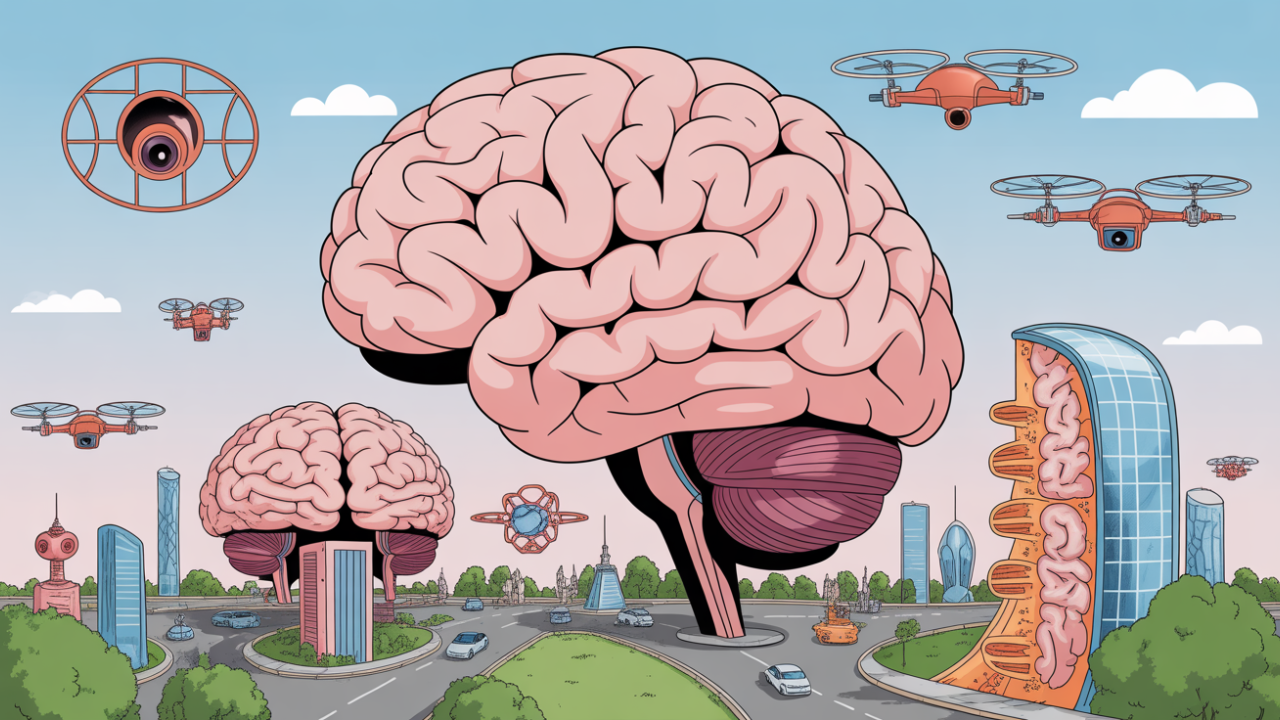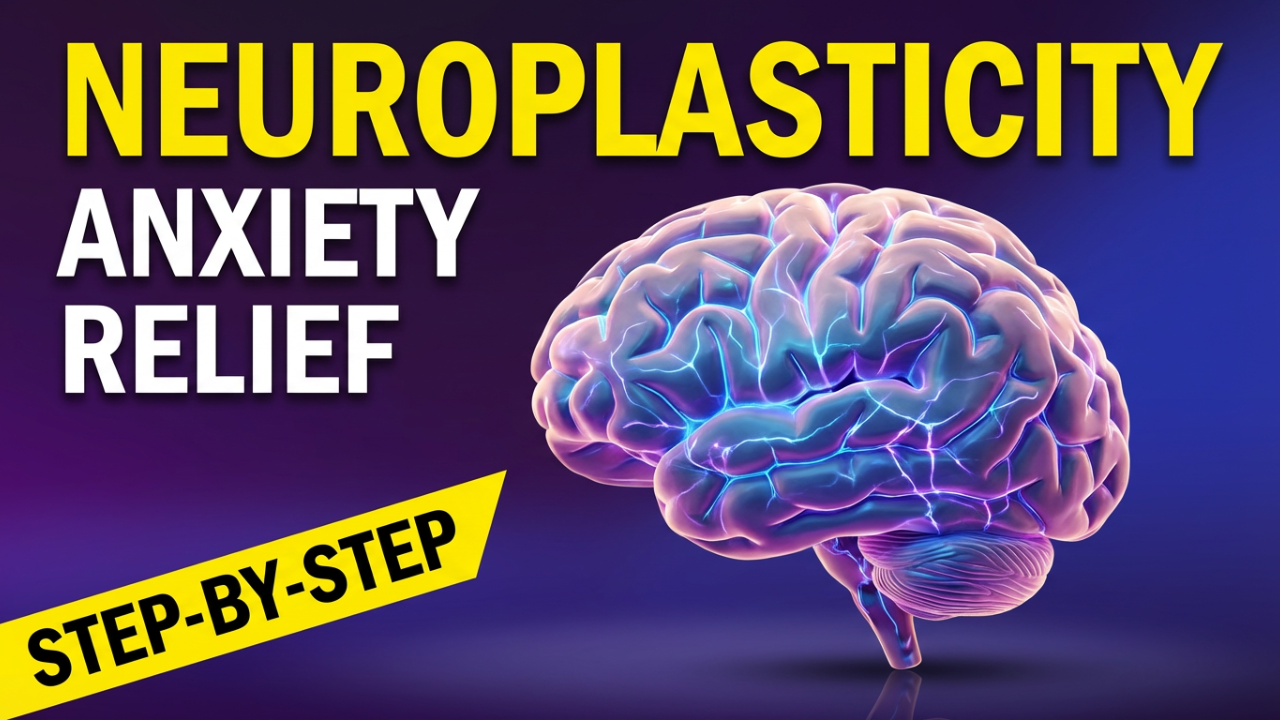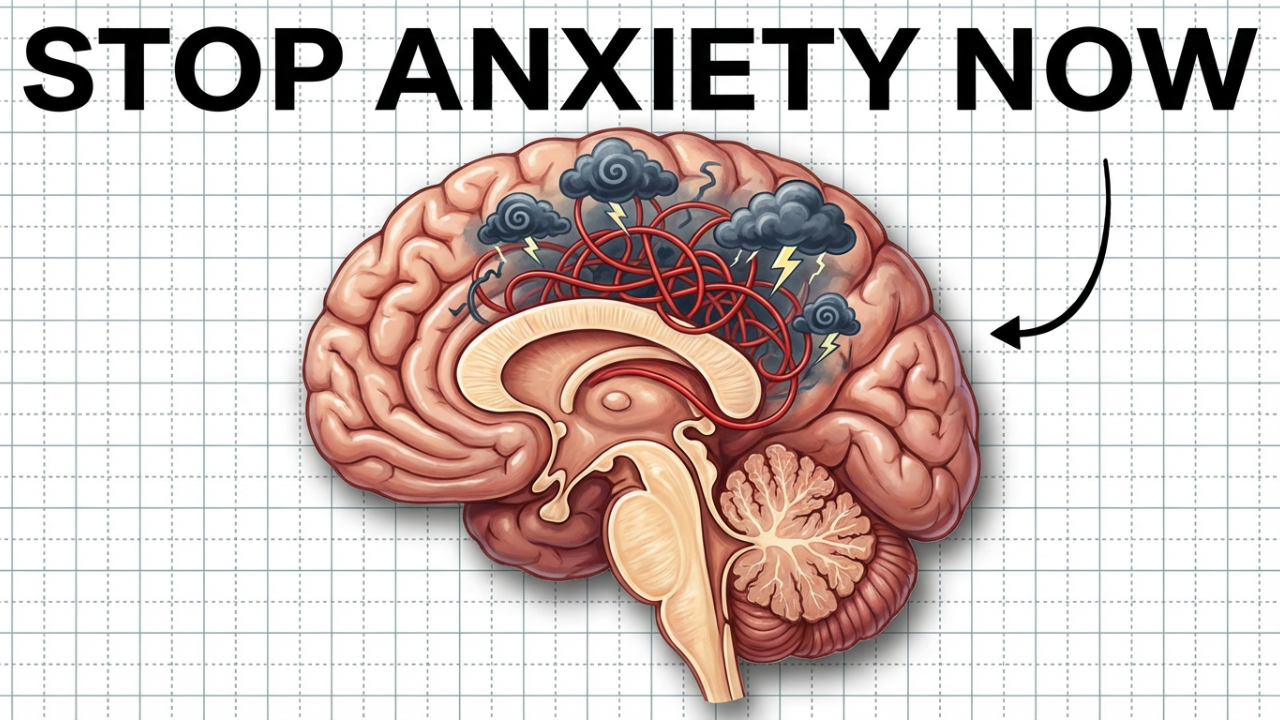You feel stuck. There’s this constant, low-grade hum of stress that’s become the background music to your life. Your creativity, that spark you know you once had, feels distant… like a memory of a different person. You’ve been told that to change, to really transform your brain, it takes intense, grueling effort. You’ve heard the hustle culture mantras demanding more discipline, more willpower, more grinding. But what if that’s not the whole story? What if the most powerful tool you could ever have isn’t something you need to go out and get, but something you already have? What if it’s been waiting, right there, inside your own mind this entire time?
For years, I was trapped in that exact cycle. My days were a blur of obligations, deadlines, and a relentless pressure to just keep up. The result wasn’t success; it was a deep, pervasive burnout. My stress levels were so high my body felt like a clenched fist, and my creative well was bone dry. I’d sit down to write, to brainstorm, to create, and… nothing. Just a hollow echo. I tried everything the world told me to do. I downloaded the productivity apps, I drank the green juices, I forced myself through brutal morning workouts, and nothing changed. The stress remained, and the creative block was a solid wall.
It was in that place of quiet desperation that I stumbled upon a concept that would completely change my reality: neuroplasticity. And not just the textbook definition, but a specific, almost magical way of using it. In this article , I’m going to show you the simple, profound imagination exercises I personally used to start rewiring my brain. These aren’t complex, they don’t require expensive equipment, and they don’t demand hours of your day. They are the exercises I used to start managing my chronic stress, dissolve my creative blocks, and unlock a level of focus I genuinely never thought I was capable of. Stay with me, because what I’m about to share has the power to change not just how you think, but who you believe you can become.
This book is scientific documentary of the Kingdom of God.
Section 1: The Myth of ‘Hustle’ and the ‘Aha!’ Moment
Our culture celebrates the grind. We’re taught to believe that meaningful change is forged only in the fires of relentless effort. We see success as the logical endpoint of exhaustion. If you want to change your brain, learn a new skill, or break a bad habit, the prevailing wisdom says to push harder, to force it, to ‘hustle’ until you break through. I bought into this philosophy completely. I believed my stress was a problem of poor management, and my creative block was a failure of discipline. So, I tightened my grip. I woke up earlier, scheduled my days down to the minute, and tried to brute-force my brain into a new state of being.
The result? A spectacular failure. Not only did my stress not go away, it got worse. The pressure I put on myself just became a new source of anxiety. My creativity didn’t just stay blocked; it felt like the entire well had been paved over with concrete. I was trying to shout down my own neurology, and my brain, quite rightly, was shouting back. I hit a wall—a point of such profound exhaustion that I had no choice but to just… stop.
It was in that space of surrender that I found a new path. It started with a simple question from a friend, a cognitive science student. He saw how exhausted I was and asked me, “What if you’re trying to use a hammer to sculpt clay?” The question just hung in the air. He started explaining neuroplasticity, not with jargon, but with analogies. He told me my brain wasn’t a fixed computer, but more like a vast, dynamic landscape. The negative thought patterns, the stress responses, the creative ruts—he described them as well-worn trails in a forest. Every time I had a stressful thought or felt that surge of anxiety, I was walking down that same trail, carving it deeper and deeper until it became a trench. My ‘hustle’ was just me, running faster down the same miserable path.
But, he explained, neuroplasticity is the brain’s incredible, lifelong ability to forge *new* trails. It can adapt and form new connections at any age. This isn’t just a hopeful theory; it’s a fundamental property of our brains. The brain can physically change its structure and function based on our experiences, our behaviors, and most importantly, our thoughts. The famous saying in neuroscience, “neurons that fire together, wire together,” suddenly clicked. My problem wasn’t a lack of effort; it was that I was constantly reinforcing the wrong neural circuits—the circuits of stress and creative scarcity.
Then came the real ‘Aha!’ moment. He said, “The crazy part is, your brain has a hard time telling the difference between a vividly imagined experience and a real one.” Neuroimaging studies have shown that when you visualize doing something, your brain activates many of the same areas as it would if you were actually doing it. Imagination isn’t just fluffy daydreaming; it’s a neurological reality. It’s a simulation engine we can use to rehearse and reinforce new ways of thinking and feeling.
Let’s try a quick experiment. Pause for a moment. Close your eyes. Now, vividly imagine a bright yellow lemon. Picture its waxy, dimpled skin. Feel its weight and coolness in your hand. Now, in your mind, slice it in half. See the pale yellow flesh, the glistening juice welling up. Hear that faint squish as the knife goes through. Now, bring a half up to your nose and smell that sharp, citrusy scent. Finally, imagine biting right into it. That sour, acidic juice flooding your mouth.
What happened? For many of you, your mouth probably started watering. You might have felt a slight puckering sensation. Your salivary glands responded to a lemon that *doesn’t exist*. You just *imagined* it, and your body responded as if it were real. That is the power we’re going to harness. We’re going to use this internal simulator not to make our mouths water, but to systematically manage stress, ignite creativity, and consciously reshape the landscape of our own minds. I realized I didn’t need a bigger hammer. I needed to learn how to be a sculptor, using the most powerful tool I already owned: my imagination.
Section 2: The First Exercise – Rewriting Your Stress Script
My first target was stress. It was the biggest monster in the room, poisoning everything else. For me, the stress was sharpest in one specific scenario: public speaking. The mere thought of giving a presentation would trigger a full-blown physiological response. My heart would pound, my hands would get clammy, my mind would go blank, and a voice of pure panic would scream, “You’re going to fail! Everyone will see you’re a fraud!” This was a deeply ingrained script, a neural highway I traveled automatically.
Trying to fight it with logic was useless. Telling myself to “calm down” was like throwing a pebble at a tidal wave. This is where I first used imagination with a technique related to what psychologists call Cognitive Reframing. At its heart, this is about identifying your unhelpful thought patterns and consciously replacing them with more balanced ones. The goal isn’t to lie to yourself or just “think positive.” It’s about creating a more accurate, less catastrophic story. By using imagination to repeatedly rehearse a new narrative, you can weaken the old stress pathways and build new, resilient ones.
So, here’s the exact step-by-step process I used, which I call “Stress Script Rewriting.”
**Step 1: Identify the Trigger.**
First, get specific. “Stress” is too vague. What is the *exact* situation that kicks off your negative response? For me, it was the moment right before I was introduced to speak. For you, it might be opening a tough email from your boss or seeing a certain number on the scale. Don’t judge it. Just identify the precise moment the script starts playing. This act of observation is the first step in separating yourself from the reaction.
**Step 2: Deconstruct the Original Script.**
Now, what’s the story you tell yourself? Write it out. What does that narrator in your head say? What images flash in your mind? What do you feel in your body? My script was: “My heart is beating too fast. I can’t breathe. They’re all waiting for me to mess up. This is going to be a disaster.” I wrote down the physical sensations (racing heart), the catastrophic thoughts (I’m a fraud), and the core emotion (fear). This might feel uncomfortable, but you have to see the script clearly before you can rewrite it.
**Step 3: Enter the Imagination Lab.**
This is key. Find a quiet place where you won’t be disturbed for 10-15 minutes. This is your mental laboratory. It’s a place to experiment without any real-world risk. Close your eyes, take a few deep breaths, and let your body relax. Research shows that a state of calm and curiosity actually helps promote the neural changes we’re after, so give yourself permission to feel safe here.
**Step 4: Craft the New Script.**
Now, you’re the director. Your goal is to write a new, more helpful script. It can’t be some wild fantasy like, “I am the world’s greatest speaker!” Your brain will just reject that. It needs to be believable and balanced. A good rewritten script often acknowledges the feeling but reframes the story around it.
My new script went something like this: “I feel my heart beating. This isn’t fear; this is my body getting ready to perform. It’s adrenaline, and it will give me energy and focus. I know my material. My goal isn’t to be perfect; my goal is to share something valuable. Even if I stumble, I can recover. This feeling is temporary, and I’m in control.”
See the difference? It acknowledges the physical sensation (“I feel my heart beating”) but reinterprets it (“This is my body getting ready”). It shifts the focus from internal judgment (“I’m a fraud”) to external purpose (“share something valuable”).
**Step 5: The Multisensory Rehearsal.**
Writing the script isn’t enough. You have to *rehearse* it until it feels more real than the old one. This is what guided imagery is all about: creating a detailed, multisensory mental scene.
In your imagination lab, visualize the trigger scenario—but this time, play the *new* script. Immerse yourself in the scene:
* **See:** See the room clearly, but see the audience as curious or friendly, not judgmental. See yourself standing there, looking poised.
* **Hear:** Hear your own voice—calm, confident, and clear. Hear the sound of your steady breathing.
* **Feel:** This is the most important part. *Feel* your heart beating and consciously label it “energy,” not “anxiety.” Feel your feet firmly on the floor. Imagine a feeling of calm confidence spreading through your body.
* **Connect:** Connect with the emotion of this new script. Instead of fear, summon the feeling of purpose and calm competence.
I practiced this visualization every day for ten minutes. At first, it felt like an act. But I gently kept redirecting my focus to the new script. Studies show this kind of visualization can actually lower cortisol levels and strengthen the neural connections for calmness. Each time I practiced, I was carving a new neural trail, making it wider and easier to travel.
The result? The next time I had to give a presentation, my heart still beat fast, but for the first time, it wasn’t followed by the usual cascade of panic. The new script started to play automatically: “This is energy. You are ready.” Over time, the new script became my default. I had used my imagination to literally start rewiring my brain’s response to a lifelong trigger.
Section 3: The Second Exercise – The Creativity Catalyst
Once the stress siren began to quiet down, I noticed something else: an uncomfortable, empty silence where my creative ideas used to be. Chronic stress can deplete our cognitive resources, leaving little room for the playful, exploratory thinking that creativity needs. My approach to creativity had always been passive—I waited for inspiration to strike. But I learned that creativity isn’t just a mystical event; it’s also a cognitive skill.
Specifically, it relies heavily on “divergent thinking”—the ability to generate lots of unique ideas for an open-ended problem. And like a muscle, this ability can be strengthened with exercise. Research has shown that engaging in these kinds of tasks can increase connectivity in the parts of your brain that are crucial for innovation. The problem is, our modern lives often discourage this. We search for the ‘one right answer’ on Google, which can weaken our brain’s ability to make unexpected connections on its own.
To counteract this, I developed a simple but incredibly effective exercise I call “The Unrelated Object Fusion.” It’s a workout for your brain’s ability to connect seemingly random concepts—the very bedrock of new ideas.
Here’s how you do it.
**Step 1: The Random Draw.**
First, you need two completely unrelated nouns. You can open a book to a random page and point, use an online random word generator, or just look around your room and pick two things that have nothing to do with each other. Let’s use a **cloud** and a **bicycle**. Perfect. The lack of an obvious link is what makes this so powerful.
**Step 2: The Fusion Challenge.**
Now, set a timer for five minutes. Your challenge is to imagine how you could fuse these two things. You’re not looking for a practical answer at first; you’re looking for *any* answer. The goal is novelty. Ask yourself a series of “What if?” questions:
* What if a bicycle was made of cloud-stuff? Would it float? Would it rain when you pedaled hard?
* What if clouds had bicycle wheels? Where would they go? Could you ride a storm?
* What if a bicycle was a machine that *made* clouds? A personal rain-maker for gardeners? An artist’s tool for sky-writing?
* What if “cloud” means data, and a “bicycle” is a new data-sharing network that only works when people are exercising?
Don’t filter yourself. Let the ideas be absurd or silly. The very act of forcing these two distant nodes in your brain to connect is the exercise. You’re forging a new neural pathway that didn’t exist five minutes ago.
**Step 3: The Story Weaving.**
Once you have a few ideas, pick one and spend another five minutes fleshing it out. This moves from pure idea generation to applied imagination. Let’s take the “Cloud Bicycle” that makes personalized weather.
* **What’s it called?** The “Nimbus 2000.”
* **Who is it for?** Eccentric urban gardeners or maybe performance artists.
* **What’s its story?** I might imagine a quirky inventor who loved cycling and gardening and was frustrated by watering restrictions. She tinkered in her garage and created a device that uses the kinetic energy from pedaling to seed small, localized clouds that produce a gentle shower.
* **What does it look like?** I’d visualize a retro-style bike with a polished copper tank on the back and delicate nozzles that mist particles into the air, creating a shimmering, tiny cloud.
By creating a story, you’re adding layers of sensory detail and emotional context, making the new neural connection richer and more robust.
**Step 4: Pushing Past the Obvious.**
Here’s a pro-tip: the most creative ideas often show up only after the obvious ones are gone. The first few answers you generate will probably be easy associations. The real magic happens when you push yourself to find a fourth, a fifth, a tenth connection. That’s when your brain has to leave the main roads and start bushwhacking through the neural wilderness. It’s the mental equivalent of the last, most challenging reps in a workout, and it’s where the real growth happens.
I did this for ten minutes every morning. The first few days felt awkward and forced. But I persisted. And slowly, things started to shift. I started noticing connections everywhere in my daily life. During a meeting, when we were stuck, my mind automatically started fusing unrelated concepts from the conversation, and I blurted out a novel solution that surprised everyone, including me. The exercise was like taking my brain to the gym. I was training my brain to become an idea-generating machine.
Section 4: The Third Exercise – Rehearsing Your Positive Future
With my stress more manageable and my creative engine restarted, there was one final piece. I had learned to use my imagination to deal with problems from the past (stress) and to generate ideas in the present (creativity). But I hadn’t yet used it to consciously build my future. This final exercise is about moving from a reactive state to a creative one.
This is the practice of Mental Rehearsal. Elite athletes, surgeons, and musicians have used this for decades. They don’t just hope for a good outcome; they meticulously rehearse a successful performance in their minds. Research confirms why this works: vividly imagining performing a skill activates the brain’s motor and sensory areas almost as much as actually doing it. It builds confidence and primes your neural networks for success.
This exercise, “Future Rehearsal,” is about applying that same elite method to your own goals. You’re creating a detailed blueprint of a desired outcome so your brain already recognizes the path when you start walking it.
Here’s the step-by-step process.
**Step 1: Define a Crystal-Clear Goal.**
Vague goals get vague results. “I want to be healthier” is not a goal you can rehearse. “I will complete a 5k run in under 30 minutes, six months from now” is. “I want to be more confident” is a wish. “I will confidently deliver the quarterly presentation without reading from my notes” is a specific performance. Choose one meaningful goal and write it down.
**Step 2: Build the Immersive Scene of Success.**
Now, back to the theater of your mind. Your task is to construct the entire scene of success in painstaking detail. Let’s use the goal of “confidently delivering the quarterly presentation.”
Close your eyes. Where are you? A boardroom? A conference hall? Picture the specific room. What color are the walls? Who is there? Visualize their faces. What are you wearing, right down to your shoes? The more detailed the scene, the more “real” it feels to your brain, and the more effective the neuroplasticity.
**Step 3: Engage All Senses.**
This is what separates passive daydreaming from active neuro-sculpting. To really make this stick, you have to pull in all your senses.
* **Visual:** See yourself walking to the front of the room. See your slides on the screen. See the engaged expressions on your colleagues’ faces. See yourself smiling, looking calm and in command.
* **Auditory:** What do you hear? Hear your own voice—measured, clear, and confident. Hear the enthusiastic applause at the end. Let that sound fill your mind.
* **Kinesthetic/Feeling:** This is the internal part. Feel the sensation of calm in your chest. Feel the solid ground beneath your feet. And critically, *feel* the powerful emotion of accomplishment and pride washing over you as you finish. Don’t just think about feeling proud; generate the actual physical sensation of pride in your body.
* **Smell/Taste:** These are often overlooked but are powerfully tied to memory. Can you smell the faint scent of coffee in the room? Can you taste the mint you had right before you started? Adding these details makes the simulation profoundly more convincing.
**Step 4: Visualize the Process, Not Just the Prize.**
This is a crucial and often-missed step. Visualizing only the moment of victory can create fragile confidence. True resilience is built by also visualizing yourself successfully navigating challenges.
So, imagine you forget a point mid-presentation. Instead of visualizing panic, visualize yourself calmly pausing, taking a sip of water, and smoothly recovering. Imagine someone asking a tough question. Instead of getting flustered, rehearse the feeling of welcoming the question, pausing thoughtfully, and delivering a clear, respectful answer. By rehearsing how you’ll overcome obstacles, you’re building the neural pathways for resilience. You’re teaching your brain, “Even when things aren’t perfect, I can handle it.”
I applied this to a major career goal: securing a competitive project. Every morning for fifteen minutes, I ran this full-spectrum rehearsal. I visualized the final meeting. I felt the texture of the chair. I heard the client say, “We’d like to move forward.” I felt the firm handshake and the surge of pride. I also rehearsed answering their toughest questions with poise.
When the actual meeting arrived, it felt eerily familiar. My brain had already been there dozens of times. The anxiety I would normally have felt was replaced by a sense of calm readiness. I wasn’t just hoping to succeed; I was executing a program I had already installed in my mind. When we got the call that we had won, the feeling wasn’t shock, but recognition. I had already felt that pride in my imagination lab every morning for two months.
Conclusion
We’ve journeyed from the trenches of chronic stress, to the open fields of creativity, and finally, to the architect’s table where we can blueprint our own future. The core message is simple and incredibly empowering: your brain is not fixed. It is a living, dynamic, and malleable thing. You are not just a passenger in your own mind; you are its primary architect. The worlds you build in your imagination are the tools you use to shape its very structure.
We’ve explored three practical exercises you can start using today:
1. **Stress Script Rewriting:** To replace old fear circuits with new scripts of resilience.
2. **The Creativity Catalyst:** A workout to build new connections and boost your innovation.
3. **Positive Future Rehearsal:** An elite method to program your brain for success.
These aren’t magic tricks. They are neuroscience-backed training protocols for your mind, working through the principle that what you repeatedly practice, you become. They require nothing more than a few minutes, a quiet space, and the willingness to engage with the most powerful technology you will ever own: your imagination. The greatest lie we’ve been told is that we’re powerless over our internal state. The greatest truth is that you have the ability to change your brain and, in doing so, to change your life.
So here’s my challenge to you. Don’t just read this. Be an active participant in your own transformation. Start with just one of these exercises. The one that calls to you most. Commit to practicing it for just five or ten minutes a day for the next week. See it as a fascinating experiment.







